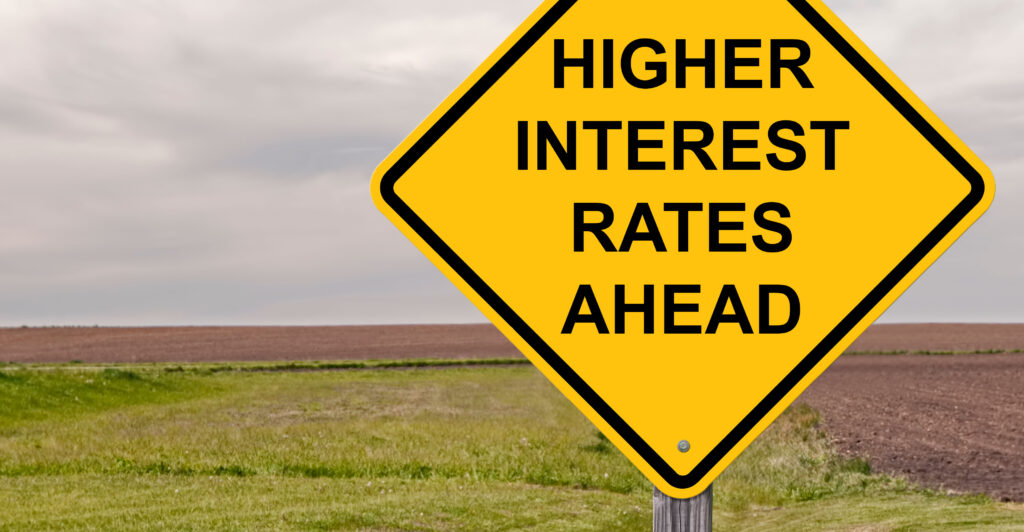If you think the Treasury Department borrowing trillions of dollars is a problem only for future generations, think again. The interest rates on your credit cards, student loans—and even your mortgage—are all up now because of the Treasury’s borrowing spree, and it’s costing you thousands.
The runaway spending in Washington has been a problem for decades, but it got a violent shove into overdrive during the past several years. The Biden administration and its big-spender allies in Congress—from both parties—have already racked up $6.8 trillion of additional debt. And that money had to come from somewhere.
For the first couple years of the Biden administration, it came from the Federal Reserve, which simply created the money. That devalued the currency and caused 40-year-high inflation. When the Fed stopped its printing presses, however, the Treasury had to borrow from the public.
That forced interest rates on Treasury bills, notes, and bonds to rise—and fast. Many Treasury yields have quadrupled in less than four years. Some yields have increased 75-fold. The reason is simple: The Treasury is competing with everyone else to borrow trillions of dollars annually.
You may not realize it, but when you apply at a bank for a mortgage, or online for a credit card, or at a dealership for an auto loan, you’re actually competing to borrow money. A lender has many options when it comes to lending out his money. And that means loan pricing is a competitive process.
We call the price to borrow money the interest rate. A higher interest rate means it’s more expensive to borrow, while a lower interest rate reduces the cost of borrowing.

(Photo: Jim Vallee/iStock/Getty Images)
Like other markets, when there is a surge in demand for loanable funds, the price rises. Hence, if people want to borrow much more money, interest rates offered on loans will march upward. Those borrowers who are willing to pay more will receive loans; the other would-be borrowers receive nothing.
The Treasury has provided just such a demand surge—in spades. The federal government is running a $3 trillion annualized deficit for the current fiscal year. To lure lenders away from private borrowers, the Treasury was forced to offer higher interest rates.
But that left less money available for those private borrowers, individuals, and businesses alike. With potential borrowers competing for fewer dollars, the interest rate for private loans also rose.
To add insult to injury, 40-year-high inflation has so increased people’s cost of living that they’re able to save less, if anything at all. The average savings rate today is less than half of its pre-pandemic level, and the reduction in savings has decreased the amount of money available for lending.
The smaller supply of loanable funds has also pushed up the price of borrowing, driving interest rates even higher.
Furthermore, Treasurys are viewed as essentially guaranteed, having no default risk. Any individual, no matter how creditworthy, will have some level of risk for which the lender will ask to be compensated. That means private borrowers will pay an interest rate premium compared with the federal government.
The result has been a tripling of mortgage interest rates for many borrowers, record high interest rates on credit cards, and the highest student and auto loan interest rates in more than a decade.
Americans are paying more than $240 billion annually just in credit card interest, before they put a dime toward actually paying down their balances. For the first time ever, interest on non-mortgage debt has caught up to the interest families are paying on their mortgages.
Speaking of mortgages, higher interest rates have increased the monthly payment on a median price home by over $1,000 compared to three years ago. That’s an extra $12,000 each year—for 30 years—for the same house.
It’s the same story with student and auto loans: The typical American family is paying thousands more annually in interest payments now than in 2021.
The high borrowing costs punishing American families are here to stay as long as Congress continues its breakneck pace of deficit spending. Until that stops, the Treasury will continue sucking all the oxygen out of the room, while American families suffocate financially.
Distributed by Tribune News Service
Have an opinion about this article? To sound off, please email letters@DailySignal.com and we’ll consider publishing your edited remarks in our regular “We Hear You” feature. Remember to include the URL or headline of the article plus your name and town and/or state.




